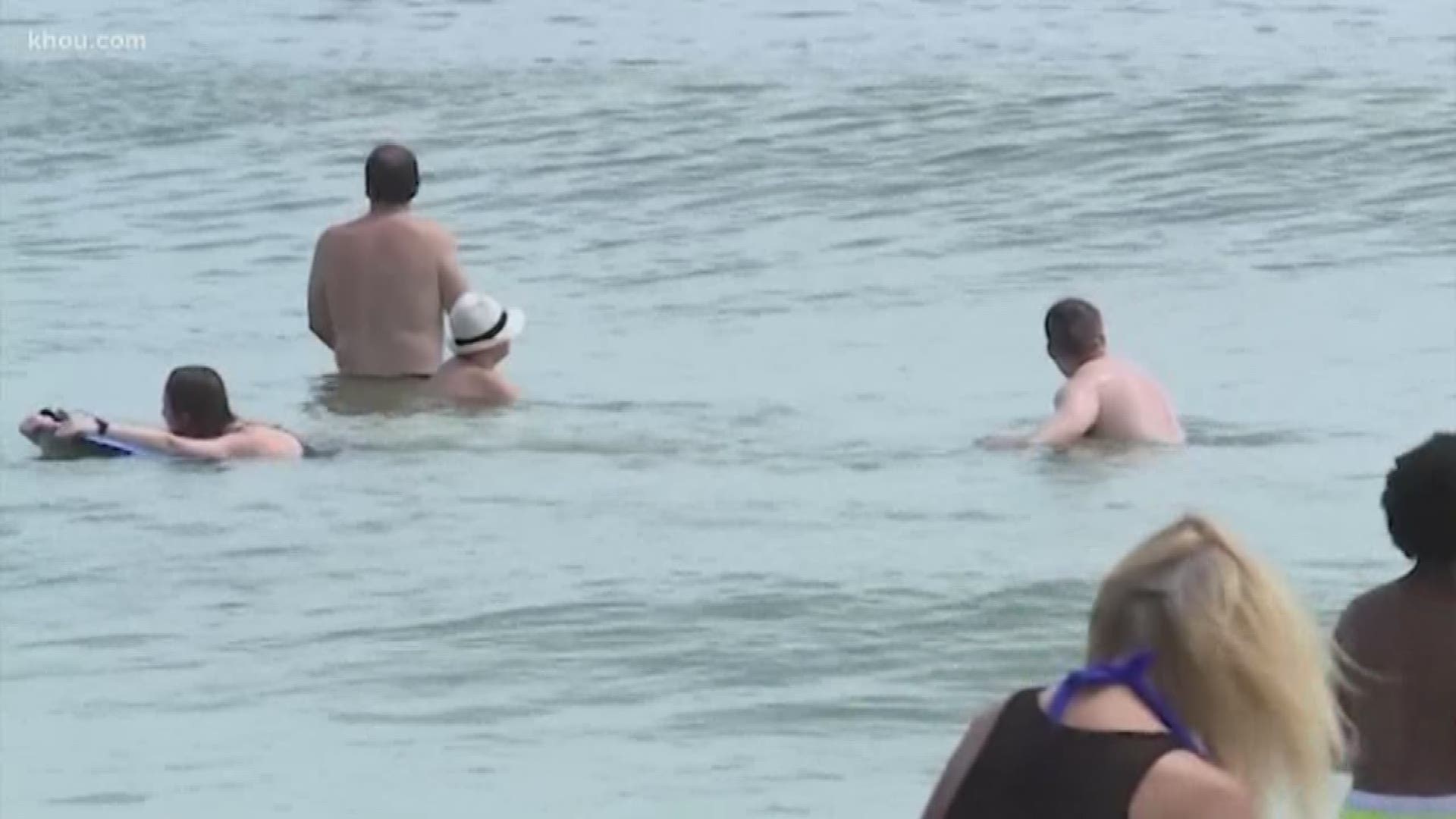HOUSTON — If you head out to Galveston or any beach along the Texas Gulf coast, you're likely use to the health warnings associated with jumping into the Gulf of Mexico: Beware of the flesh-eating bacteria.
In fact, the State of Texas updates this website with daily water quality reports.
And unfortunately each summer, we share the stories of people who've contracted a case of the flesh-eating bacteria called vibrio.
The Centers for Disease Control and Prevention report vibriosis causes 80,000 illnesses and 100 deaths in the U.S. annually. People become infected one of two ways -- either by consuming raw or under-cooked seafood, or by exposing a wound to seawater. The CDC reports a majority of the infections happen from May to October when water temperatures are warmer.
Most people with a mild case of the bacteria will recover in about three days with no lasting effects, but those who become seriously ill could lose a limb or die.
Past Texas cases
The Texas Department of State Health Services told KHOU11 that from Jan. 1, 2019, to July 31, 2019, there have been 143 cases of vibrio in Texas.
Robbie Siler lost his left leg after contracting the flesh-eating bacteria during a fishing trip to Baffin Bay in south Texas during Father's Day weekend. His family says Siler was in the water for 10 minutes and that it's a miracle he survived the amputation.
Gary Evans, a man from Victoria, died after he and his family went to Magnolia Beach for the Independence Day holiday. His wife, Debra Mattix, says the 56-year old was in good health when he went to Magnolia Beach along Matagorda Bay. But, he got sick the next day, then couldn't walk, and died three days later.
"His hat fell off into the water a couple of times and he picked it up and you just laugh about it, and he put it back on his head, was that it," said Mattix. "Was that the entryway then? I don't know. Could it have been when he pulled the crab traps out of the water and the breeze, some of the water sprinkled on him them? But to say we floated out in the water – no we never got in the water."
Impact of climate change
Experts say climate change is helping to drive the increase, allowing the bacteria to thrive in waters that were once too cold.
In 2017, researchers with the National Oceanic Atmospheric Administration studied a change in temperatures in the Chesapeake Bay. Researches wrote that they found that vibrio cases could increase with changing climate conditions by the end of this century.
A June 2018 report published by the National Institutes of Health reported an increase of cases from 1996 to 2005. "Increased water temperatures caused by atmospheric warning and increased salinity gradients caused by sea level rise raise concerns for the effect of climate change in the geographic ranger of Vibrio and the potential for increased exposure risk."
Doctors published a report in June 2019 in the Annals of Internal Medicine that state that warming water, due to climate change, is the cause for recent cases of the flesh-eating bacteria in the Delaware Bay, where reported cases used to be rare.
What about shelffish?
While people with compromised immune systems, who may not be able to fully recover from a major infection, should always be cautious when entering water, researchers say it's actually shellfish that is the main cause for people contracting vibrio.
Researchers at Texas A & M Galveston have been studying vibrio in oysters for the last 21 years. Oysters, more than other shellfish, accumulate the bacteria in their tissue, says Mona Hochman, who manages the Seafood Safety Lab for TAMU-Galveston's Marine Biology Department.
Hochman says vibrio becomes a problem in bay waters because of the salinity and temperature. The optimum temperature for vibrio to grow is between 68-95 degrees Fahrenheit.
It's important to remember vibrio naturally exists in marine environments throughout the world, including warm coastal waters.
ALSO POPULAR ON KHOU.COM

